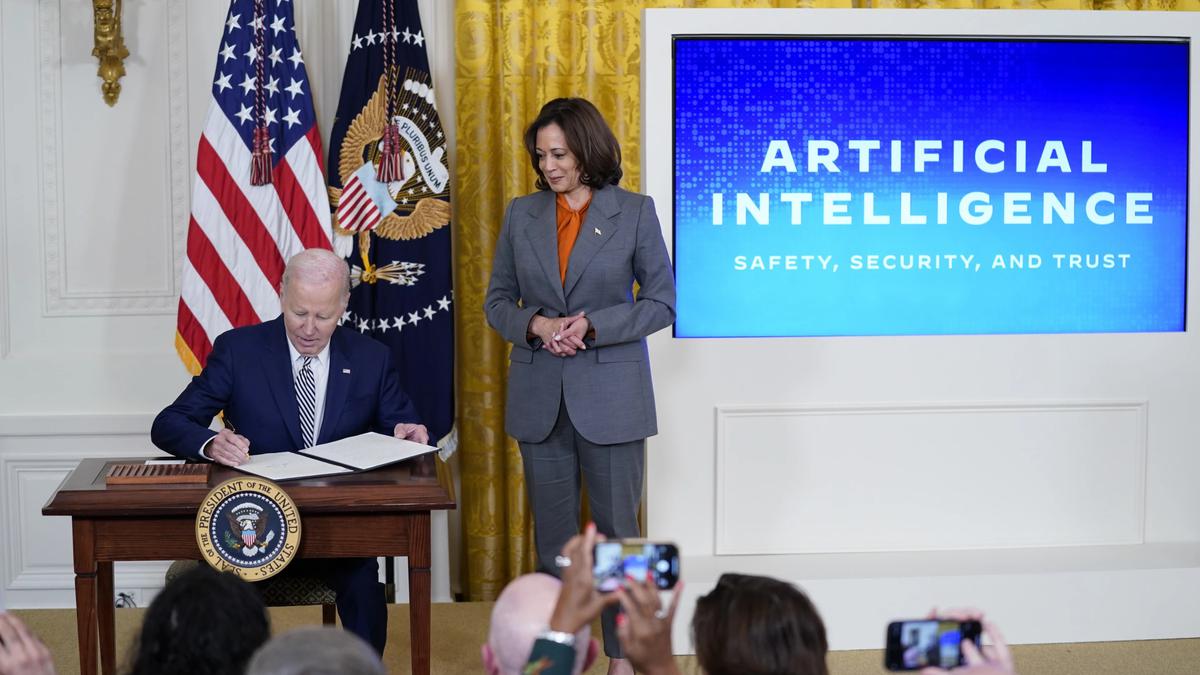
U.S. President Biden’s executive order on AI | Explained Premium
The Hindu
Explained | What is Biden’s executive order on AI and what it means
The story so far: Artificial intelligence (AI) is making advancements globally even as governments struggle to establish a regulatory framework for the evolving technology. Joining the global efforts to govern AI, United States President Joe Biden last month issued an executive order to promote the “safe, secure, and trustworthy” use and development of AI by addressing broad issues related to privacy, misinformation and discrimination.
The order, signed by Mr. Biden on October 30, lays down a preliminary set of guidelines for American companies and federal agencies to follow when dealing with the design, acquisition and deployment of advanced AI systems, with security as its core, and before making such technologies available to the public. Mr. Biden has insisted that the order is the “most significant action” any government in the world has ever taken on AI safety, and also called upon the Congress to pass bipartisan legislation to stop Big Tech platforms from collecting the personal data of citizens.
The latest action follows the AI Bill of Rights issued by President Biden last October, and voluntary commitments from technology giants to comply with safety standards for AI. Before this, the Trump administration had also issued an EO in 2019 which laid out basic standards for the use of AI.
Also Read | The potential of generative AI: creating media with simple text prompts
The President manages the operations of the executive branch of the U.S. federal government through executive orders (EO). These are signed, written and published directives from the President to the executive branch. Only a sitting U.S. President can issue such orders to clarify and further existing laws, or overturn an existing EO by issuing another order to that effect. An EO is not a legislation and doesn’t require the approval of the Congress. It can, however, be subject to review by either Congress or courts, or both.
Executive orders have primarily dealt with regular administrative affairs and the internal operations of federal agencies. However, in recent times, Presidents have used such orders to implement policies and programmes. Mr. Biden has issued over 120 executive orders since he took over as the U.S. President in 2021.
Artificial intelligence, as defined in the order, is “any computer system or application that performs tasks that normally require human intelligence, such as perception, reasoning, learning, decision making, or natural language processing.” The EO signed by Mr. Biden lists eight principles and issues directions that companies must follow while dealing with AI tools and tech. As per the text of the order, the issued directions will be implemented and fulfilled anywhere between 90 days to 365 days.













